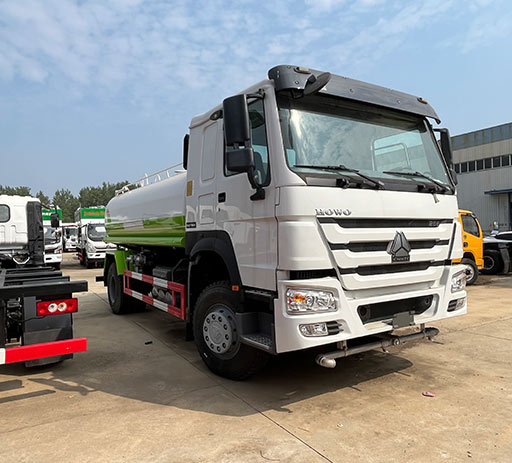Understanding Auto Gas Tank Manufacturers: A Comprehensive Guide

Introduction
Auto gas tanks play a crucial role in the functioning of vehicles, storing fuel safely and allowing for efficient combustion in engine systems. This article explores the landscape of auto gas tank manufacturers, providing insights into the brands, materials, manufacturing processes, and the factors that influence consumers’ choices. Whether you’re a vehicle owner, industry professional, or just someone curious about automotive components, this guide will equip you with essential knowledge about auto gas tanks and their manufacturers.

The Role of Gas Tanks in Automobiles
Gas tanks, or fuel tanks, are integral parts of a vehicle’s overall design. They store the fuel needed for engine operation and ensure it is delivered to the engine’s combustion chamber. Here, we’ll delve into their importance and function.
Importance of Fuel Tanks
- Storage Efficiency: Gas tanks are designed to maximize fuel storage while minimizing space utilization in the vehicle.
- Safety Features: Modern tanks come with technology that minimizes leaks and reduces the risk of fire.
- Fuel Management: Gas tanks feature design elements such as baffles and shapes that ensure proper fuel flow, especially when the vehicle is in motion.
Types of Gas Tanks
There are various types of gas tanks used in vehicles, mainly categorized by material:
- Plastic Tanks: Lightweight and corrosion-resistant, widely used in modern vehicles.
- Metal Tanks: Durable and historically used in older models; more prone to rust and corrosion.
- Composite Tanks: Innovative tanks that combine different materials to enhance performance and safety.
Leading Auto Gas Tank Manufacturers
This section covers the major players in the auto gas tank manufacturing industry. We will examine their strengths, product offerings, and market reach.
1. TI Automotive

TI Automotive is recognized as one of the top auto gas tank manufacturers globally. They specialize in plastic fuel tanks that offer superior weight savings and safety benefits.
Key Features
- Innovative fuel delivery systems
- High-quality polymers for fuel resistance
- Advanced manufacturing techniques for durability
2. Yachiyo Industry Co., Ltd.
Japan-based Yachiyo Industry has established itself as a leader in the automotive parts sector, particularly in fuel systems. Their products adhere to stringent quality standards.
Key Features
- Environmentally sustainable manufacturing processes
- Variety of sizes and designs for different vehicle models
3. Continental AG
Continental AG is a German multinational corporation that provides various automotive components, including gas tanks. Their focus is on innovation and technology.
Key Features
- Smart fuel management systems
- Robust safety standards
- Integration of digital technologies in fuel systems
4. SFC Solutions
SFC Solutions is a key player in the North American market. They focus on providing customized solutions for a variety of vehicle types.
Key Features
- Tailored products for OEM and aftermarket applications
- Strong commitment to customer service
5. Dura Automotive Systems
Dura Automotive, headquartered in Michigan, specializes in fuel delivery systems, providing innovative solutions for a cleaner environment.
Key Features
- Focus on lightweight materials
- Innovative designs that enhance safety
Materials Used in Gas Tank Manufacturing
The choice of materials in gas tank manufacturing affects durability, safety, and functionality. Here we explore common materials and their properties.
Plastic
Most modern vehicles utilize high-density polyethylene (HDPE) due to its durability and corrosion resistance.
Metal
Metal tanks, usually made from steel, are thicker and robust but are now less common due to rust issues.
Composite Materials
These are a blend of materials designed to offer the best properties of both plastic and metal, improving strength and safety significantly.
Manufacturing Processes of Auto Gas Tanks
The manufacturing process is crucial in determining the quality and performance of gas tanks. Here’s an overview of common manufacturing techniques.
Injection Molding
A widely-used process for creating plastic fuel tanks, involving injecting molten plastic into a mold, allowing for high-volume production at lower costs.
Blow Molding
This process is particularly useful for making hollow objects like fuel tanks. It involves inflating hot plastic inside a mold.
Thermoforming
Sheets of plastic are heated and formed into shape. This method is often used for smaller production runs.
Environmental Considerations in Gas Tank Manufacturing
As the automotive industry shifts towards sustainability, understanding the environmental implications of gas tank production becomes essential.
Recyclability
Many manufacturers, such as TI Automotive, enhance their designs to make materials more recyclable, integrating sustainability into their processes.
Reduction of Emissions

Innovations in gas tank design, such as reducing the space for vapor in the tank, contribute significantly to lower emissions during operation and prior to disposal.
Choosing the Right Auto Gas Tank
When selecting a gas tank, whether for a new vehicle, replacement, or performance enhancement, consider various factors.
Vehicle Compatibility
Always ensure the gas tank meets specifications for the model and make of your vehicle.
Material Durability
Consider the tank’s material and its resistance to rust, corrosion, and chemical reactions with the fuel.
Manufacturer Reputation
Researching and selecting reputable manufacturers can lead to better quality products and longer warranties.
Cost-effectiveness
While price matters, finding a balance between cost and quality is vital.
Future Trends in Auto Gas Tank Manufacturing
The auto gas tank industry is evolving, driven by technological advancements and changing consumer demands. Here are some major trends to watch.
Increased Use of Alternative Fuels
With the rise of electric vehicles (EVs) and alternative fuel technology, some manufacturers are adapting designs for hybrid or alternative fuel applications.
Smart Technology Integration
Manufacturers are increasingly integrating smart systems into gas tanks for improved fuel management and safety diagnostics.
Focus on Lightweighting
As fuel efficiency becomes paramount, materials and design processes that reduce weight without sacrificing safety are gaining traction.
FAQs
1. What are the most common materials used for auto gas tanks?
The most common materials are high-density polyethylene (plastic), metal (typically steel), and composite materials.
2. How can I tell if my gas tank needs replacement?
Signs include leaks, rust, unusual smells, or warning lights on your dashboard indicating fuel delivery issues.
3. Are plastic gas tanks safer than metal tanks?
Yes, plastic tanks are often safer as they are less prone to rust and can absorb impact better, reducing the risk of explosion.
4. How do I choose the right manufacturer for a gas tank?
Consider the manufacturer’s reputation, product specifications, warranty options, and customer reviews.
5. What innovations are currently being introduced in gas tank technology?
Innovations include smart technology integration, lightweight materials, and designs that reduce emissions and increase fuel efficiency.
6. Can gas tanks be recycled?
Yes, many gas tanks, especially those made from plastics and certain metals, can be recycled after proper disposal methods are followed.
